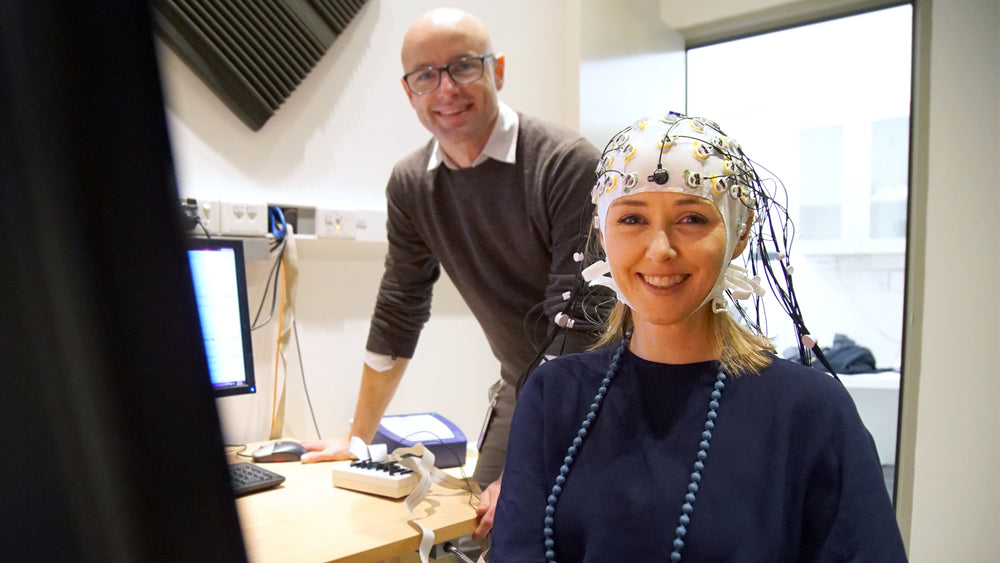 “I think it would be really helpful if you could share practical tips for people on how they can just turn their minds off,” said Andrea, who works in the HR department at a multi-national software company.*
“I think it would be really helpful if you could share practical tips for people on how they can just turn their minds off,” said Andrea, who works in the HR department at a multi-national software company.* Andrea was calling because she was providing copies of my latest film, My Year of Living Mindfully to her colleagues and she wanted me to deliver a “behind the scenes and journalistic insights” presentation to everyone via cyberspace.
People in Andrea’s company are spread all over the world, from London to Melbourne and Jakarta in between. But although they’re in different countries, in different jobs, and living in different circumstances, they all share a common bond; they’re living in the midst of a pandemic with an uncertain outcome. As we spoke, it was obvious that Andrea was sharing the film with her colleagues because she wanted to uplift them and make a difference, but also that she herself was struggling and looking for solutions.
Andrea is based in Melbourne, Australia and living under “Stage 4” restrictions, which represents one of most uncompromising COVID19 lock down situations in the world. Until the rate of infection is deemed back under control, Melbournians risk on the spot fines of $1650 if they leave their homes for anything other than essential work, healthcare, grocery shopping or outdoor exercise within five kilometres of their home. “It’s all just so uncertain and out of my control. I get on my exercise machine at home, not because I want to go for a run but because I feel like my body needs to move to just keep up with my racing, looping thoughts. I mean, is it even possible to stop this overthinking?” she asked me.
After reminding Andrea that I’m a journalist, not a psychologist or psychiatrist and that for personalised help she should consult a specialist, I also said that it might be helpful to tackle her problem by understanding the current scientific thinking about how our minds work.
“The human brain has 100 billion neurons, each neuron connected to ten thousand other neurons. Sitting on your shoulders is the most complicated object in the known universe.”
Michio Kaku
American theoretical physicist
Among the 18 leading mindfulness scientists I interviewed throughout the production of My Year of Living Mindfully, six were neuroscientists and that’s in addition to the three neuroscientists involved in studying my brain to see what would happen as a result of my meditating every day for a year.
Although the results of my self-experiment were fascinating, what really stunned me was learning that although scientists have discovered more about the human brain in the last 20 years than in all prior human history, something that is as real to me as my conscious awareness is still only theoretical.
It also turns out, the old “triune brain” model, which pits a primitive “lizard brain” against more recently evolved “mammal” and “executive” human parts of the brain, has been debunked for more than 20 years. And while it was once thought that brain functions could be pinned down to the isolated operations in single brain areas (i.e., “the amygdala is your brain’s stress centre”), it turns out, mental activity results from complicated, dynamic interactions of brain areas, that operate in large-scale networks. Basically, my brain’s 100 billion neurons work together to form a matrix of globalised, Internet-like complexity.
All this is to say, that scientists are increasingly studying the brain not from a “regions” or “area” perspective, but from a “network” perspective, and there’s one network in particular that I thought Andrea would be interested in – the default mode network (DMN).
The DMN lights up in brain scanners when scientists tell their subjects not to do anything in particular. I think of it an automatic mental program that runs when there’s nothing more important going on. And it’s designed to force me to think about my place within the world; to make sense of all things related to ‘me’, ‘myself’ and ‘I.’

According to cognitive scientist Matthew Lieberman from the University of California Los Angeles, having a DMN makes perfect sense from a survival-of-the-species, evolutionary perspective. Being pre-programmed to spend our downtime processing and re-processing social information is Mother Nature’s way of ensuring that we work well with others for the good of the tribe. And there’s usually absolutely no problem with having a robust DMN. After all, it’s helpful to be able to remember who I am each morning and I have some of my best ideas when I’m in the shower taking “mental time-out”.
But there can also be huge downsides to having an inner social network. Like Mark Zuckerberg’s social media network, it’s notorious for hijacking my inner thoughts, taking me off task and making me feel like crap. One famous study called “A wandering mind is an unhappy mind” asked thousands of people to report their mental focus and mood at random times throughout their day, and concluded that people are thinking about what is not happening almost as often as they are thinking about what is happening. The researchers also concluded that doing so generally makes people unhappy.
Learning all this made me realise that Mother Nature didn’t intend for my default self-system to make me happy, she designed it to automatically force me to mull over my life. Whenever I internally replay my verbal blunders or conjure fantasy conversations, whenever I sink into childhood memories, obsesses over an irretrievable email, or throw myself and my family into a horrible hypothetical future, that’s all my DMN coming online.
To be clear, the problem is not having a DMN. It’s the extent to which I get caught up in the drama of my thinking and take it all personally. Overthinking, or what experts might call “excessive worry”, “rumination”, “self-criticism” and “loneliness” are all hallmarks of the inner social network, which unsurprisingly is also linked to a range of disorders from depression and anxiety, to post-traumatic stress. It seems, there are times when the worry about the problem is worse than the problem itself.
And this is where mindfulness training enters the picture. When I was shooting the film, a time before COVID19 changed global travel indefinitely, I flew to Florida in the U.S. to meet with Associate Professor Amishi Jah from the University of Miami, who’s a long-term meditator and leading mindfulness neuroscientist. Amishi explained that she believes mindfulness training is kind of like a cognitive-yoga or an inner mental workout, which trains us to be able toggle between brain networks.

Although there is currently not yet a “neural signature” for mindfulness training, Amishi thinks there are at least three major brain networks involved. “So for example, a simple exercise like mindfulness of breathing, the key aspects of that are to notice what’s happening in the body tied to breathing, select some aspect of a sensation, and then when the mind wanders, to return it back. So, the keywords that I take away are notice, select, and control (or notice mind wandering), and it ends up that that fits very nicely with very well-established brain networks,” she said.
These networks are the salience network (SN), which is said to be a bit like an air traffic controller, filtering and sorting the bombardment of sensory input from the outside world; the central executive network (CEN), which is our “thinking hard” network and comes online when we’re putting effort into focussing and sustaining our attention; and the… default mode network.
Remarkably quiet default mode networks have been recorded in the brains of long-term meditators both when they are and are not practicing. On the flip side studies in patients with major depression and anxiety show heightened DMN activity, both when they’re resting and when they’re doing a task. The more DMN activity in depression, the more correlation there is with the severity of rumination and depression. It seems, there is a big difference between ruminating and problem-solving and when it comes to having an optimal default mode network, the Goldilocks principle might apply – not too little, not to much, just right.
Amishi’s theory is that mindfulness training is like doing “mental push-ups,” giving me more mental strength and better ability to toggle between different brain networks and the next step is to work out if doing mindful mental push ups could boost resilience and prevent trauma-related mental illness for people in high-performance and high-demand jobs, such as doctors and nurses, soldiers, firefighters, and police.
So, as I spoke to the 348 people from Andrea's organisation over an online team "Town Hall" earlier this week, my mission was to answer Andrea’s question about whether it’s possible to “just turn our minds off.” The answer, unfortunately, is no. But as Professor Richard Davidson, the Director of the Center for Healthy Minds at the University of Wisconsin, Maddison, explained in my most recent podcast episode, this all comes down to the simple idea that wellbeing can be learned. That wellbeing is actually a skill.
After my year-long self experiment, I'm 100 percent convinced that by doing my mental push ups every day, I can recognise the looping default mode thoughts in my head, get some distance, and intentionally re-direct my thinking. And, in the same way that I was taught as a child not to believe everything I first hear, I'm now learning not to believe everything I first think.
* Andrea’s name has been changed





 The Connection (DOWNLOAD-TO-OWN)
The Connection (DOWNLOAD-TO-OWN) My Year Of Living Mindfully - Book
My Year Of Living Mindfully - Book




